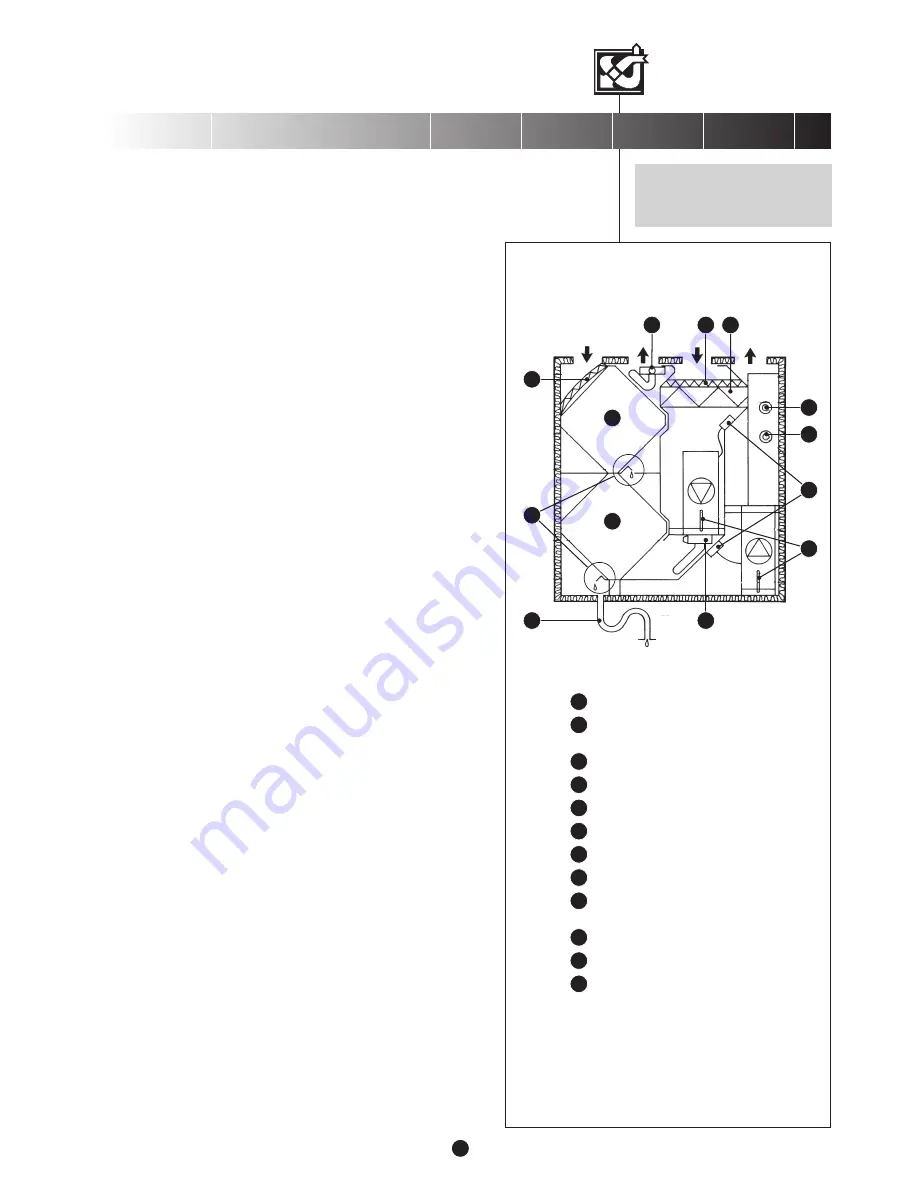
VALLOX 70
7
MAINTENANCE INSTRUCTIONS
3. MAINTENANCE INSTRUCTIONS
Before starting maintenance operations, stop the unit at the ON/OFF switch,
or by removing the fuse from the fuse box of the house.
3.1. Filters
Outdoor air is filtered in the unit with two kinds of filters. The EU1
coarse filter (C) filters insects and coarse pollen and dust. The EU7 fine
filter (D) filters fine dust that is not discernible to the eye. Discharge air
is filtered with a similar EU1 filter than outdoor air (A).
Clean the coarse filters (A, C) by washing them
at
least twice a year
(or
more often if needed) and whenever the (optional) filter guard indicates
that maintenance is needed.
Clean the filters with 25...30
°
C water and washing-up liquid, pressing
them lightly. Do not handle the filters with force. When properly
cleaned, the filters stand cleaning 4 to 5 times. This means they
have to
be replaced every two years
or when needed.
The fine filter (D) cannot be cleaned with water. Clean it in connection
with the cleaning of the EU1 filters, vacuuming it with a brush roll. When
cleaning, take care not to break the filtration material.
In order to ensure
good quality supply air,
replace the filter every one to three years, depending on the
quality of air in the neighbourhood
. It is recommended to replace the filters in
the autumn. In this way, the filter stays fresh during the winter and
efficiently filters the dust in the following spring.
While cleaning the filters, it is also recommended to check the
cleanliness of the heat recovery cells (L) about every two years. Holding
the ears at the end of the cells, pull the cells out of the unit. If a cell is
dirty, wash it by sinking it to water containing washing-up liquid. Rinse
the cell clean by showering it with water. When water has flown from
between the sheets, push the cell back into the unit, making sure the
sealings against the slide surfaces are in place and that the "this side
up" label at the end of the cell points to the corner facing the upper
support.
Discharge air filter EU1
A
Reset button of the overheat protector of
the post-heating radiator
B
Outdoor air filter EU1
C
Outdoor air fine filter EU7
D
Defrosting regulation 0...+10
°
C
E
Post-heating regulation ...+10ºC...+25
°
C
F
Electric quick-disconnect coupling of the fan
G
Fan fastener
H
Reset button of the overheat
protector of the preheater
I
Condensing water
J
Drip groove
K
Heat recovery cell
L
3.2. Fans and Post-heating Radiator
Because of the electric quick-disconnect couplings, the fans can be
removed for maintenance. Unfasten the coupling (G) and the fastener
(H), and pull the fan out.
In connection with maintenance operations, it is important to check the
cleanliness of the inside of the unit: the fans, the heating radiator, the
drip groove and the rest of the inner structures. If there is dirt, remove it
carefully (using a damp cloth, brush, vacuum cleaner or similar.) Do not
pour water to the electric devices and motors. To ensure proper
functioning and hygiene, the unit has to be kept clean.
A
C
B
K
J
E
F
D
I
H
G
L
L
3.3. Condensing Water
During the heating season, the humidity in discharge air condenses as
condensing water. Water formation may be abundant in new buildings
or if ventilation is scarce as compared to moisture production by the
inhabitants.
The condensing water must be able to exit the unit without hindrance.
In connection with maintenance operations, for example in the autumn
before the start of the heating season, make sure that the condensing
water joint (J) in the bottom tank is not clogged. You can check this by
pouring a little water in the tank.
Do not let any water enter the electrical
devices.
REMEMBER!
Clean the filters at least twice
a year.
Parts Needing Maintenance








